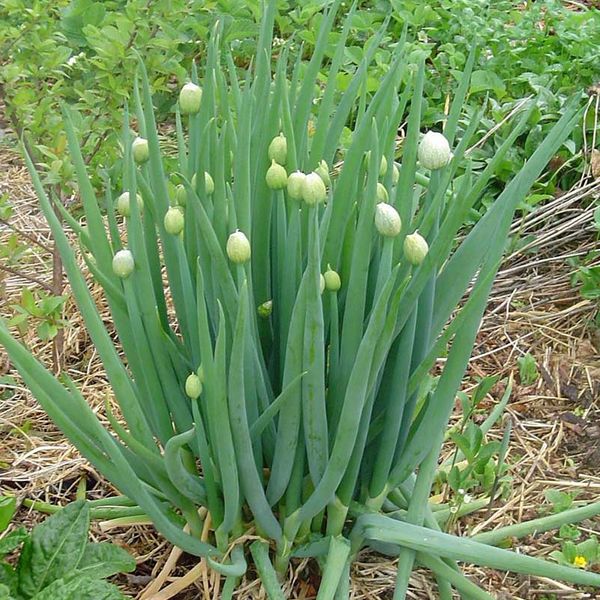Onion batun - a popular perennial vegetable garden of the family of the lily family, which is easy to breed. It is unpretentious in care and resistant to frost without a transplant. Due to its frost resistance, the batun gives early greens in the spring, the snow will barely melt. Greens can be used in salads and main dishes.
Table of contents
Description and characteristics of onion batun
Externally, the batun is difficult to distinguish from onions. It has the same leaves with a pipe, but its size is larger and longer. The bulb of a batun is not the same as that of bulb onions, but a false bulb (small thickening). therefore grow it just for the green.
Batun is the source:
- essential oils;
- Sahara;
- protein;
- carotene;
- vitamins;
- salts of iron, potassium and magnesium.
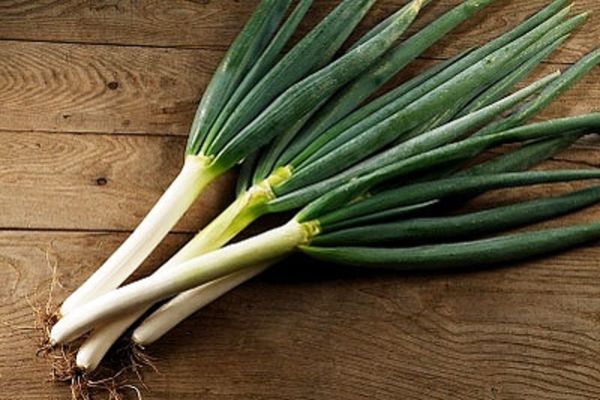
Varieties for growing and planting in open ground
The most famous varieties are "May", "April", "Tenderness" and "Salad-35".
The last three are early grades. They even survive snowless winters. April strongly branched, in May large bright green leaves begin to grow. Not susceptible to disease.
May - late grade. Also frost resistant. Shoots appear late. Excellent branches. Harvesting - from May to June.
Sort Russian winter also frost resistant and gives a high yield. Approximately 30 days pass from germination to harvest. Sowing on seedlings is carried out in late autumn or in April / May. When planting seeds to plant every 14 days, you will always have greens on the table.
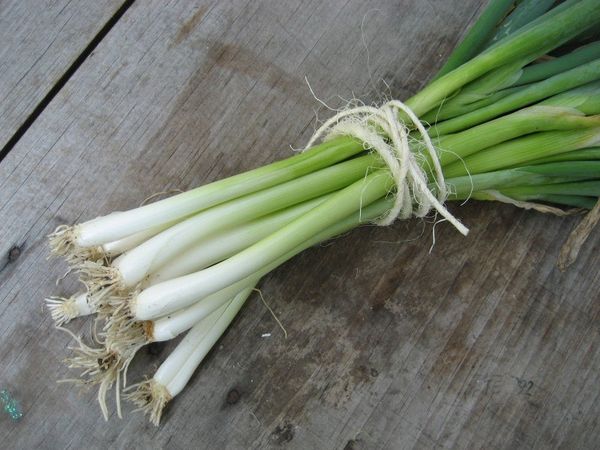
Terms of planting seeds in the spring
In the middle lane begin to sow June-July. This is a very suitable time interval for landing. The shoots will be friendly and fast, the plants will safely survive the winter. With proper cultivation in the open field, the crop will be as much as you want.
And when sowing in early spring in July-August, the batun will delight with its green leaves.
Site selection and soil preparation
To grow it needs fertile rich soil (sandy loam, loam, black soil) and a lot of sun. The plot before planting or sowing is prepared in the fall. Mineral fertilizers, humus, manure and compost are applied.
Onions grow well and will sprout well if the soil is nutritious and contains a lot of humus, as well as in those areas where they previously grew potatoes, cucumbers, tomatoes, cabbage.
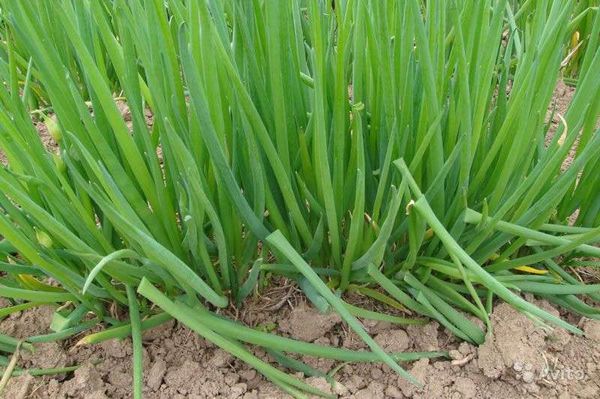
Earth must be well dug before planting.
How to plant and sow seeds
Soil digging deep before sowing, the remains of vegetation and roots of weeds are removed, fertilized, the seeds are soaked in a solution of micronutrients.Seeds will germinate more easily and yield will be higher. Avoid seed sowing - this will make sowing difficult.
The prepared beds abundantly moisten and deepen the bow by 1.5-2 cm. The row spacing should be 25-30 cm.
At moderate air temperature, the first shoots will spill in 14-18 days. At warmer temperatures, they will appear earlier.
If the onions are planted or sown as an annual plant, sowing is carried out in early spring, and by next year the plants are completely removed. But you can plant in summer and autumn. The main thing that the onions did not start to sprout in the winter, and that will perish. You can harvest at different times, depending on the time of planting. Perennials are planted in the fall.
When the soil warms up up to 5-10 degrees sow onions. The soil is gently compacted. The beds can be covered with something that retains heat, for example, with a film.
After 8-10 days, the first shoots appear. Conduct the first loosening. So that the thick shoots do not interfere with each other, they must be thinned out. Plants should divide 6-9 cm.
Care after sowing seedlings
After sowing seeds and sprouts you need regularly remove weeds and moisten the soil. For perennials, when there will be 3 leaves, remove excess seedlings. We leave those that share a few centimeters. We repeat the procedure until there is about 5 cm between shoots. Thinning is not done for annuals. At the same time, onions are fertilized and watered.
Not later than mid-July, everything is cut except for young feathers. Until full recovery by September, cut the leaves is not recommended. By winter, leave the beds with feathers. The first crop is cut in 25-32 days, and again - after 55-65 days.
Harvesting feathers as greenery
You can clean at the end of May, when the feathers will grow up to 25 cm. The following cuts are made at intervals of 3-4 weeks.
Heap shoots of young onions are green feathers with excellent taste. If the batun starts to shoot arrows, his taste will deteriorate. Therefore, it is better not to allow this.
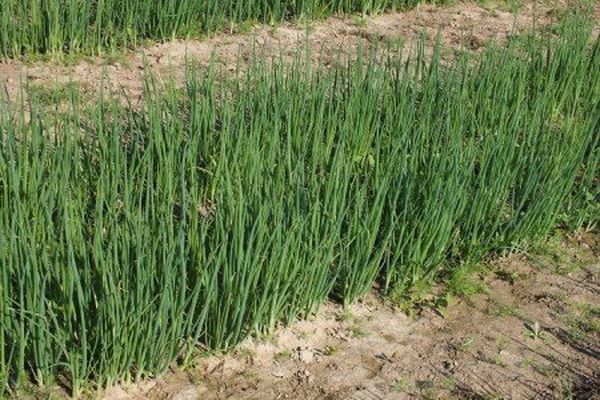
If a batun is grown as an annual (sowing seeds in spring), then after a year (March-April) the whole plant is removed. If he is a perennial, it is usually cut off the leaves in the spring and autumn once or twice.
Although it is recommended to change the site for the batun every year, in one place it can grow up to 10 years. However, after the fourth year, the yield drops and it is better to transplant or rejuvenate the onions with new crops.
The leaves are cut off at the root when they reach 20-30 centimeters in length. Feathers are tied up in bunches and stored in the refrigerator.
Diseases and pests of perennial onion batun
As a result of the disease in onions can:
- the color of the leaves changes or spots appear on them;
- the bulbs become soft;
- white or dark bloom appears on the bulbs;
- dries the aerial part of the plant.
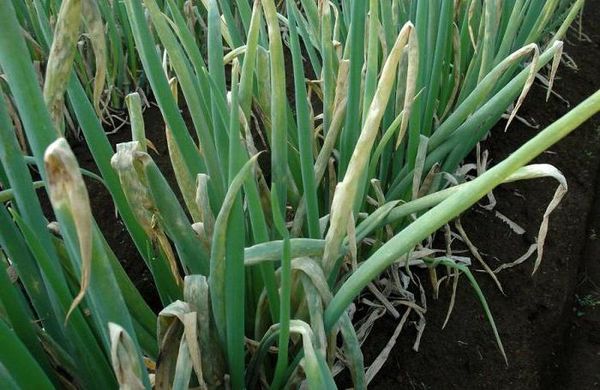
There are quite a few pests.
Hidden trunk
Onion weevil - small, a few millimeters in size dark color beetle. The larva is a small yellowish caterpillar. They eat the flesh of the leaves. Especially damaged leaves dry up.
Onion fly
The fly lays eggs, from which in the middle of June the larvae hatch. They penetrate young bulbs and devour them from the inside. Batun turns yellow and dies.
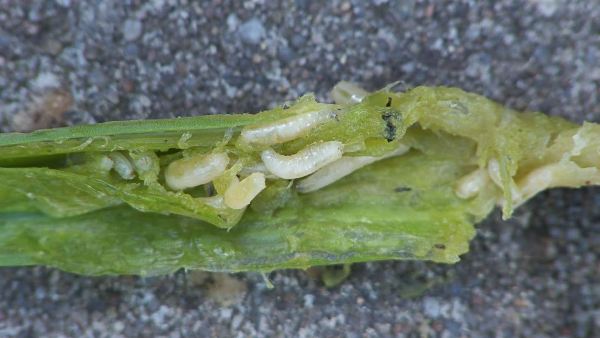
Trips
Trips or thrips - small insects (up to 1 mm in length) pale color. They harm not only the onions and garlic, but almost all garden plants. The larvae feed on sap from the stems and leaves of plants.
Potato and winter scoops
Scoops are small pale butterflies. Their caterpillars eat roots, leaves and stems most garden and even flower crops.
Pest Control Tips:
- observe crop rotation (choose a new site away from the previous year's site);
- dig deep in the fall;
- pest-infested plants;
- loosen the soil to a depth not less than 10 cm (during this procedure, most of the pupae will be on the surface and will die);
- process with salt and various infusions that repel insects.
Onions a batun - a source of early vitamins and a tasty additive to our table.
